

Destinations
Experiences
 |
L A
D A T C O T O U R
S |
 |
||||||||
| HOME | South America | Falkland Islands | Antarctica | Unique Destinations |
Unique Experiences |
Newsstand | ||||
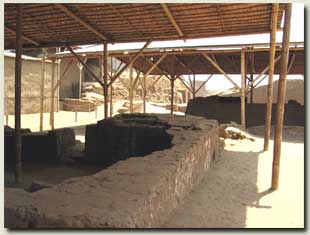 |
Sipan - Huaca Rajada
|
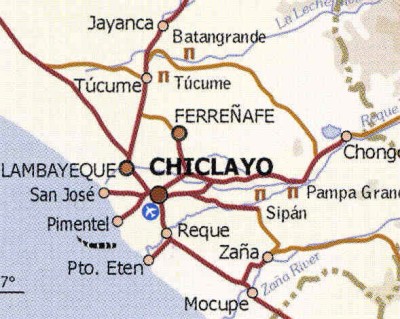 |
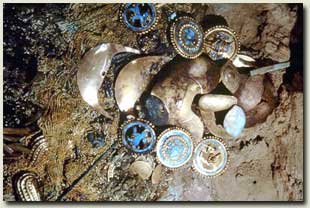 |
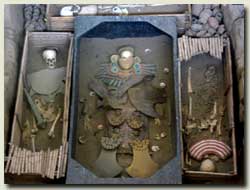 |
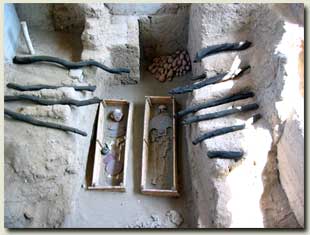 |
ABOUT SIPAN - compliments of InkaNatura:
In February 1987, shortly after the police found prehispanic handicrafts of the finest quality in the hands of local gravelooters or huaqueros, archaeologists decided to have a closer look at one small platform on the west side of the archaeological site called “Huaca Rajada” (Split “Huaca” or Adobe Ruin), close to the modern village of Sipan. Their efforts were richly rewarded with the first of several ensuing discoveries of spectacular tombs of the Moche nobility.
While thousands of prehispanic objects of considerable artistic value lie on Peruvian and foreign museum shelves, the vast majority of these come from looted graves and thus offer only limited insight into the lives of the Moche people, who lived from about IOO BC to 650 AD. Thus, the discovery of the intact, unlooted tombs of Sipán haas been enormously helpful to our understanding of American prehistory.
The complex of Huaca Rajada, Split Huaca, lies in the upper-middle section of the Lambayeque valley, south of the Reque River. It derives its name from a large cut made through the site by road-building. This huaca consists of two large, badly- eroded pyramids to the east of the road and a smaller platform on the opposite side of the road. Recent investigations have centered on the smaller platform, often called simply "Huaca de Sipan", which belongs to the Moche culture and was used for burials of people of the highest rank within Moche society. The other two structures, large, badly-eroded, stepped pyramids, seem to have been remodeled in post-Moche times and are still under investigation.Construction of the adobe pyramid that yielded the renowned "Royal Tombs of Sipan" was begun during the first century AD; the sixth and last phase of major construction was completed about three centuries later. Even during the clearing of rubble left behind by some initial looting of the site, sumptuous objects began coming to light. The looters had left behind ceramics, metal masks, metal earplugs, and even an elaborate royal scepter.
So far, researchers have excavated three major tombs of spectacular contents, and many other minor burials also have been found all through the platform. The first major discovery, Tomb 1, was uncovered shortly after excavators found an enormous cache of 1,137 ceramic pots, which overlay the skeleton of a man in sitting position. This position was unusual because the Moche normally buried their dead lying flat and facing upwards. Later, the researchers nicknamed this man "The Guardian" because his feet had been cut off, perhaps to prevent him from leaving his position, and because of his position above (i.e. guarding) the tomb of "The Lord of Sipan".The burial of this prominent Moche leader, which represents an extremely complex archaeological find, has been carbon-dated to 290 AD. It includes many dedicatory offerings that were to accompany him in his afterlife, as well as all the items of clothing and insignia that marked his high status, and other items considered necessary to protect him in the world of the dead.
This “Lord of Sipan” was 5’4” tall and died of an undetermined illness at 35-45 years of age, within the average life expectancy of the Moche population. He was buried in a wooden coffin with full regalia, including pectoral shields made of shell, bone and stone, several blankets adorned with ornate, gilded, copper platelets, two necklaces of very fine metalwork, feather ornaments, headdresses and three sets of earspools inlaid with turquoise. Also buried with him were many ceremonial utensils such as tropical sea shells of the genera Spondylus and Conus, silver and gold rattles, knives, golden death-masks, and a scepter-like object shaped like an inverted pyramid held in his right hand. His coffin takes up the central position in the burial chamber, which has additional burial niches on all sides. Six other individuals were buried in the tomb with him: a 9-10-year-old child placed at the head of his coffin, two robust men on the long sides but in opposite orientations, and three 15-25-year-old women at the head and foot of his coffin. Their coffins were made of cane. Some of these individuals had had a foot removed, and the robust men, possibly warriors, may even have been ritually sacrificed on the occasion of the burial of the Lord. The young women, however, appear to have been long dead by the time the tomb was built and hence most likely were reburied at the time the Lord was laid to rest. The funerary ritual included the slaughtering of a dog and two lamas and the deposition of several dozen vessels that probably contained food and drink. The lamas were placed at the bottom of the chamber and the offerings in specially constructed niches in the sides of the rectangular chamber.